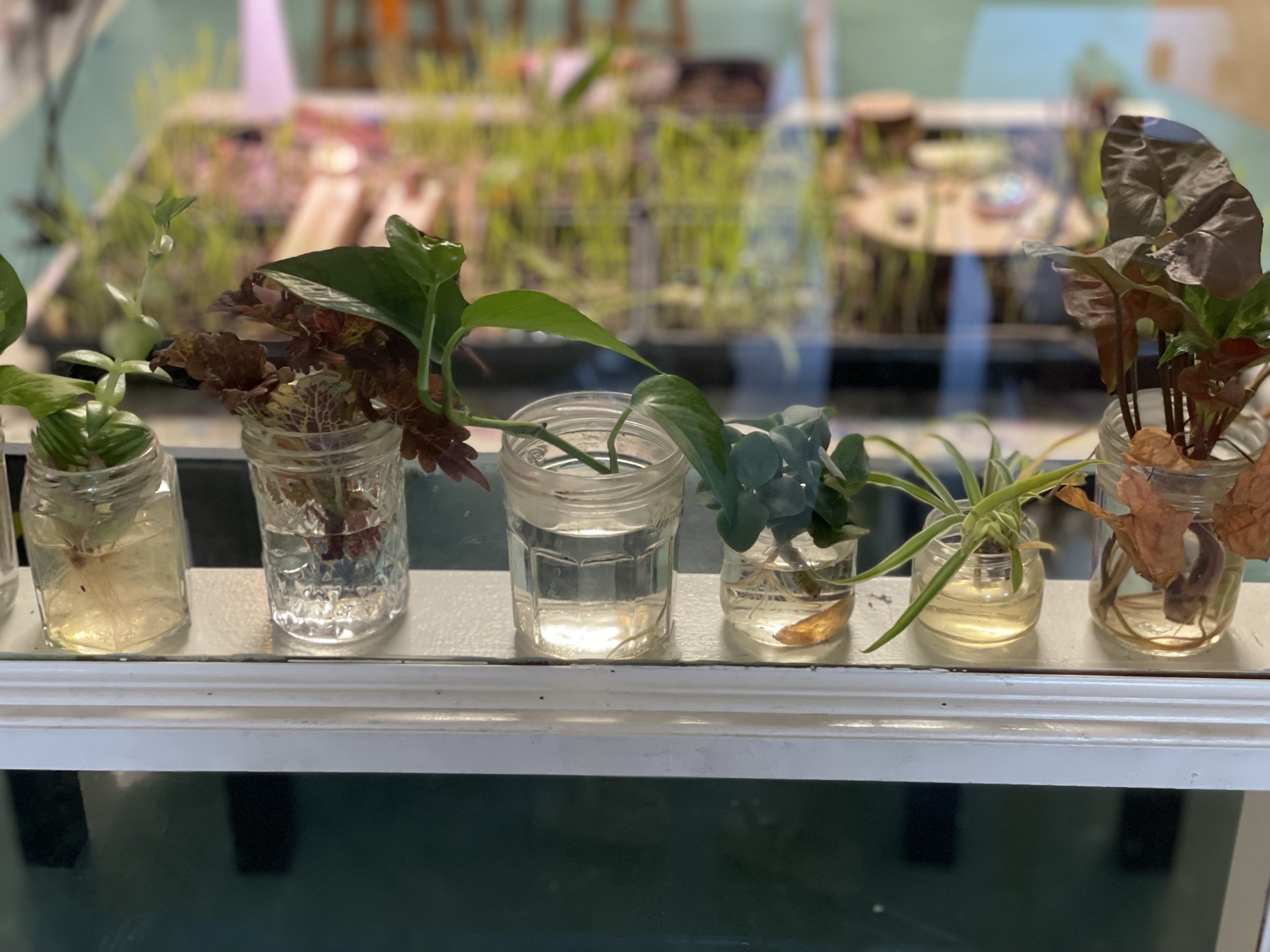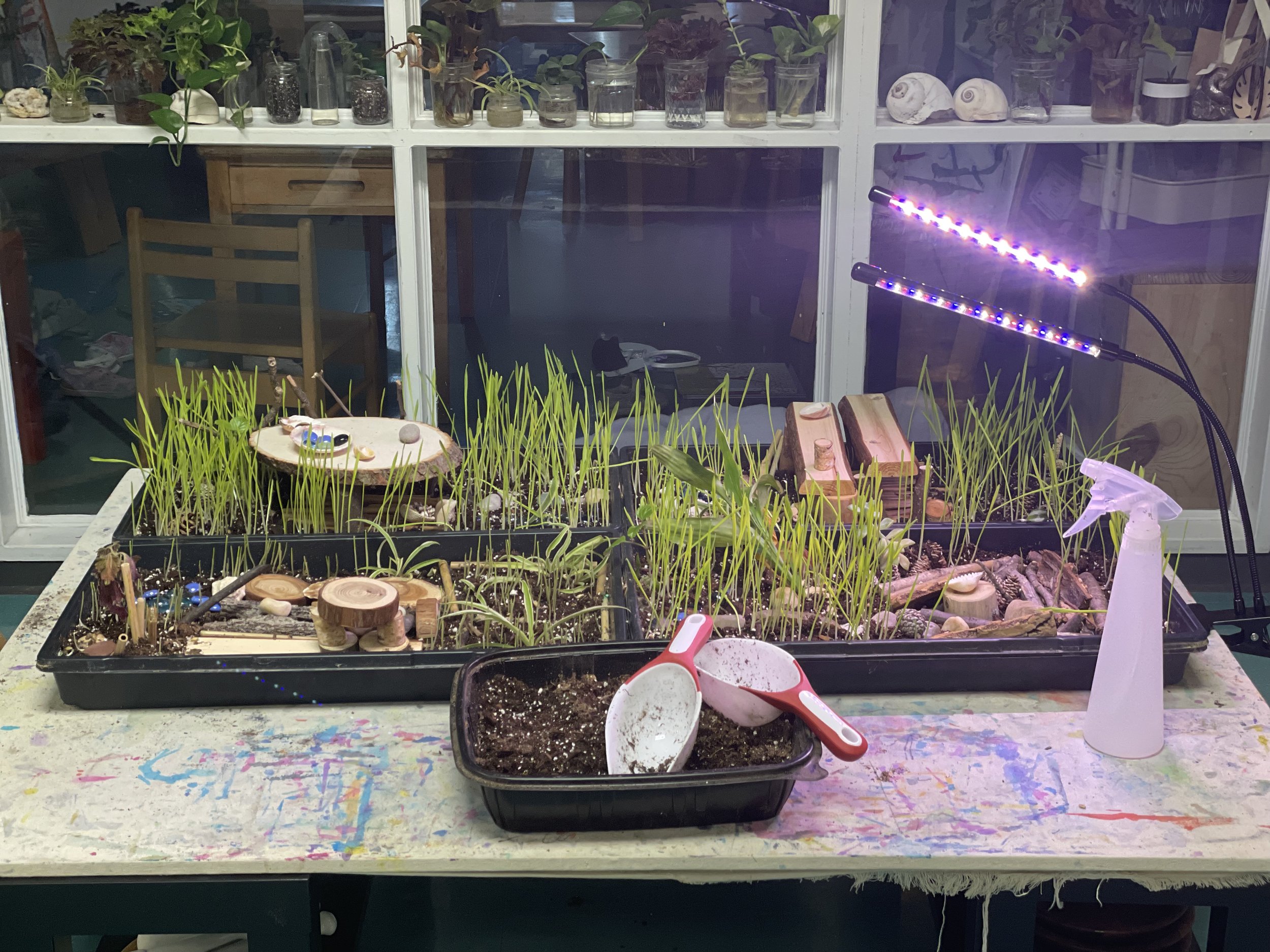The last three days in Vermont have been brilliant blue-sky with snow-covered hills kind of days. It is mid-February. The light is returning. I learned that February is the sunniest month in Vermont. Who knew?
During the last two weeks, we have hosted friends and family in our house which is usually home to just the the two of us. It has been fun to have a house full of games and puzzles, shared cooking and meals, laughter and conversations that matter. We are feeling rejuvenated by company and grateful.
We continue to work with our schools in St. Louis and Boston, either through zoom meetings or in-person on-site days. Our friends who are visiting ask us what we do. We explain as best we can…
We help teachers organize classrooms and learning experiences for their students that are engaging, well organized, and layered with many opportunities for learning and for creating meaning for themselves and others. We help teachers become more skilled at working with materials so that they can then support their students in learning and expressing ideas and discoveries in many ways. We support teachers as they learn how to ask good questions and to listen to students…to cultivate classrooms full of dialogue and exploration, excitement and joy.
It is all a challenge, and it is all worthwhile. Change is hard. And in the end, all real learning is transformative. Real learning is often not by rote and it is not only about filling in the blanks. Real learning involves using skills and stretching and putting yourself into the mix. At least, that is what we believe and that is what we have seen work for the teachers with whom we work and for the students they teach.
Before we visit a school or have series of zoom meetings with teachers, we ask that they share with us what has been happening since we last met. What are they and their students learning? What are they and their students most excited about? What are their biggest challenges?
Here we share one of those pre zoom meeting communications from a team of Pre-K teachers in St. Louis, Missouri, Gerriane Evans and Karen Mason. They teach at South City Catholic Academy where we are in our second year as consultants. This reflection shares their progress, what they have changed, how the changes have influenced and involved their students in new learning. This is transformative learning for everyone. The practice of reflection like this is helpful to everyone in any school and with any team of teachers.
The College School atelier
JK SCCA 2022-2023
Gerianne & Karen
The Message Center opened on Wednesday, November 16. It took us a little longer than anticipated to get the area ready. We rearranged a few bookcases to help with lighting and swapped out tables to get a comfortable and inviting writing space. We had limited materials set out at the beginning, no mailboxes just yet. By starting out simple, it gave us a chance to see how the children were going to use the space and materials. Then we could slowly add and change items based on their interests. The message center has been such a wonderful addition to our learning environment, better than we could have imagined.
To introduce the new learning space, it was easy to tie in the theme of Thanksgiving being mid-November by writing thank you notes to a friend or family member. We read a few books to help with this idea. One little boy (who’s going to be a big brother soon) wrote his parents a thank you note for painting his new bedroom upstairs. There have been some really sweet, thoughtful messages.
Mailboxes
The messages seemed to be getting lost in their cubbies and did not provide much motivation for making messages, so after Thanksgiving, we surprised the children with mailboxes. We modeled how to use the mailboxes and why it’s important to have a greeting (TO:) and closing (FROM:) on each message. At the end of each day, the children are called to their mailboxes to take home their mail to either read or deliver to family. Our 8th Graders even got in on the message making process by making each child a Christmas card. It was an exciting day for all of the children to have mail.
Materials
We’ve continued to add items like stamps, stickers, recycled Christmas cards, cardstock, and various writing tools. We went from using Post-It notes, which kept falling, to generating some common words or phrases (Thank You, I Love You, Happy, Birthday, Mom, Dad, Grandma, Grandpa, Get Well Soon), on laminated strips so the children could become even more independent with their message making.
Powerful Transformation in Mark Marking
The most rewarding part of the message center has been watching kids that did not show much of an interest in writing or art before, now visit the message center, excited about writing. The mark makings below are from a student that did not seem to enjoy writing before. A quick scribble and he was done. He didn’t have a real purpose I suppose. The message center gave him that purpose. He drew meaningful lines to decorate a card for his pet snake. That must be one special snake! I think Snaky received five cards that first week!
Another student used the message center to write many letters to Santa and her family. At the beginning of the year she was not even recognizing her name, let alone writing any letters. Now, she’s been using the tools at the message center to independently practice her name. She’s been so proud of herself and excited to write!
Current Message Center January 2023
We added a weekend journal display on the wall. Each week we take six children to write about something they did with their family over the weekend. The large bookshelf to the right holds literacy activities and additional writing tools and materials. The mailboxes hang on the shorter bookshelf to the left.
Work In Progress
This space continues to be a work in progress, trial and error if you will, regarding how the materials are used and displayed in this space. We are still planning to add student photos and class names on strips, so that friends can write each other's names more independently. We’re happy with how this area is being used and proud of our work. We enjoy working together with the children in this space and have accepted the challenge of keeping it meaningful for the children.
Expanding the Studio
After your visit, we swapped out a few more tables to get the right fit. We settled on a circle table that seems to fit the current space and provide sufficient space for projects and people. We continued to use the area as it was to complete some already planned projects.
We continued to think about the studio space and made a goal to improve it for the new year. Our goal was to have more loose parts and materials for the kids to use. We also wanted the children to have more intentionality when creating in the studio. We’ve been working on the following steps:
Think
Draw (discuss a plan)
Ask (teacher approval)
Create
I met with the students in small groups and asked them what they would like to see in the new and improved art studio. They generated a great list of materials and ideas that we’ve been adding to the studio.
Time is the Biggest Challenge
We’ve enjoyed creating and improving both of these learning spaces in our classroom. I would say that time is the biggest challenge. Trying to find time to plan and organize the space, time to get the materials ready and put on display and so forth. I think that’s been the most challenging for both spaces.
Still Figuring It Out
We are also still figuring out the curriculum mapping (finding the time to plan and complete), documenting and assessments. We have started using Seesaw to make digital portfolios. We can discuss this more at our next Zoom meeting.
The College School atelier








